- Home
- Burt L. Standish
The Swan and Her Crew Page 26
The Swan and Her Crew Read online
Page 26
CHAPTER XXIV.
Water Insects.--Aquaria.
One July afternoon the boys had been fishing, and to seek some shade andcoolness while eating their lunch, they had driven the yacht into aquiet pool among the reeds, which almost met over them. The water belowthem was very clear and still, and as it was only about two feet deepthey could see the bottom quite plainly, and they soon found that it waswell worth a close inspection. The pool was teeming with insect life.The surface of the water was covered with tiny whirligig beetles, whichwere skimming about in mazy, coruscating evolutions.
"Those whirligig beetles," said Dick, "have their eyes made with twofaces--one to look down into the water, and the other to look into thesky."
"What a lot you have learnt about insects, Dick, in the course of a fewmonths," said Frank.
METAMORPHOSES OF FLESH-FLY.]
"It is a grand study," said Dick enthusiastically; "and I have worked mybest at it. When one goes hard at a thing it is astonishing how soon onepicks up a lot of knowledge about it. I have read over and over againabout the common insects, or those that are the most noticeable."
"Well, tell us about all those insects we see now."
WATER-BEETLE.]
"Look at those long-legged narrow-bodied flies which are sliding alongover the surface. These are called water-measurers. That oval beetlewhich is swimming on its back, and using two legs like oars, is thewater boatman. It fastens on to the head of small fish, and soon killsthem. It lives in the water, but if put on land it can fly. Look at thatbrute crawling over the mud, with its lobster-like head. It has sharpclaws and a hollow snout. It lies in wait for its victims, and when itseizes them it sucks the juice out of them with its beak. It looks onlyof a dull brown now, but when its wings are expanded its body is of ablood red colour, and its tail is forked. It sometimes comes out for afly at night."
"And what is the fearfully ugly thing climbing up that reed-stem justout of the water?"
PUPA OF DRAGON-FLY.]
COMPOUND EYE OF DRAGON-FLY (SECTION).]
"Oh, that is the larva of the dragon-fly. The fly is about to come outof the case. Just watch it for a while."
LARVA OF GNAT.]
ESCAPE OF GNAT FROM ITS PUPA-CASE.]
The larva of the dragon-fly is one of the ugliest of creatures. It has along light-brown body and six legs. It has a fierce wide mouth andprojecting eyes. Attached to its head are two claws, which with apincer-like movement, catch up anything eatable and pass it to themouth. In its larva and pupa state it has just the same appearance, andwhen it is about to change into a perfect dragon-fly it climbs up out ofthe water and emerges out of its case, just like the butterfly, andsails away a perfect and gorgeous insect, leaving its case a transparentbrown shell, still clinging to the reed or grass-stem on which itcontracted its last change.
"Bother the gnats!" said Jimmy brushing some off his face. "There isnothing interesting about them."
"Oh yes, there is," said Dick. "They lay their eggs on the surface ofthe water, making a raft of them, and the larvae escape through thebottom of each egg into the water; and I have read that it is a verypretty sight to watch the perfect insect coming out."
METAMORPHOSES OF PLUMED GNAT.]
"I would prefer their staying down below; they bite me," answered Jimmy.
Crawling along the bottom were numbers of caddis-worms in tube-likecases made of sticks and stones. Inside these cases are the plump whitegrubs which turn into flies.
"Where the bottom is gravelly these caddis-worms make their cases oflittle stones," said Frank.
"Yes, and I read the other day that an experiment had been tried by someone, who took some out of their nests and put them into an aquarium withsome finely-broken glass of different colours, and the caddis-worms madetheir cases of this broken coloured glass, and very pretty they looked."
"Their own bodies must supply the glue which fastens the pieces ofgravel or glass together?"
"Yes, it does."
As the fish were biting very badly the boys left the broad early andwent for a stroll. While passing through the village they saw a sale ofstock going on in the open space round which the houses were ranged.They stopped to look on. The goods which were being sold were the stockin trade of a chemist, and among them were three large glass bowls, suchas are used for aquaria. These were put up by the auctioneer in one lot,but there was no bid for them. They were articles not in request in thatrural district.
PUPA-CASE, LARVA, AND FLY OF CADDIS-WORM.]
"Will no one make me a bid? Everything is to be sold withoutreservation," cried the auctioneer.
"Five shillings," said Frank.
"Going at five shillings!--going! going!--gone!"--and the lot wasknocked down to Frank.
"What are you going to do with them?" asked Jimmy.
"Make them into aquaria, of course. Don't you see they are just thething. The idea came into my head as soon as I saw them."
"Then we can put some water insects in," said Dick.
The glass reservoirs were placed on a shelf in the boat-house, and thenext morning before breakfast they were fitted up. They got a quantityof fine gravel and sand, and thoroughly washed it in water, so as tocleanse it from all mud and impurity. This was placed to the depth of acouple of inches in each vessel, and a rock-work of worn flints wasbuilt upon it. Water was poured in to within a few inches of the top,and pieces of anacharis were planted in the gravel, their roots keptdown by the stones. In a day or two the water had got clear, and theplants had taken root, and the boys proceeded to stock the aquaria. Thesmall brook near afforded minnows and sticklebacks in plenty. In astagnant pool they got some newts and water-insects. From the broad theyobtained a few small perch, roach, and bream, and an eel about sixinches long. They at first put these all together without any attempt atsorting them, and then the following consequences ensued. Thewater-boatmen fastened on the heads of the small fish and speedilykilled them, and ate them up. The sticklebacks made themselves at homeat once, and proved very pugnacious, fighting each other, dashing at astick or finger, if put into the water, but, worst of all, annoying theminnows. Each male stickleback took up a position of his own, andresented any approach to within a few inches of it. With his glaringgreen eyes, and scarlet breast, he would wage war against any intruder;and when an unsuspecting minnow came within his ken he would sidle up toit, till within striking distance, then dash at it, and strike it withhis snout in the stomach. The perch swallowed the minnows, and when theyhad vanished, attempted to swallow the sticklebacks, but the spines ofthe latter stuck in the perches' gullets and choked them. The eel, too,would writhe and poke through the gravel and stir it up, displacing theweeds and doing a lot of mischief.
MINNOW.]
This led to a general reconstruction of the aquaria. The perch weretaken out and restored to the broad, together with the eel. The roach,bream, and minnows, were put into two of the aquaria by themselves, andthe sticklebacks and water-insects into the other. Many a fight tookplace among the sticklebacks and the water-boatmen, in which sometimesthe one and sometimes the other came off victorious.
SMOOTH NEWT.]
The boys then got some caddis-worms, pulled them from their cases, andput them into a glass vessel filled with water, and having at the bottomsome glass of different colours broken into small pieces. In a shorttime the caddis-worms had made themselves new, parti-coloured cases ofglass, which were quite transparent, and through which the white bodiesof the grubs could be plainly seen. Frank put these in among the minnowsone day, and it was amusing to see the fish darting at the caddis-worms,thinking they would be soft, succulent morsels, and to watch theirevident astonishment at being foiled by the hard cases. This suggestedan idea to Frank which he afterwards carried out.
None of the sticklebacks kept by the boys built nests or bred, so thatthey missed seeing a very pretty and interesting sight. "Fishes buildingnests!" I hear some of my readers exclaiming. Yes, sticklebacks do buildnests, and in the number fo
r January 1866 of _Science Gossip_ is aninteresting account of this habit, which I take the liberty of quoting.When I have observed any fact in natural history myself, I describe itin my own words; but when I take it from the observation of others, itis fairer to them to use their own words, and far better in theinterests of truth:--
"Two pair of sticklebacks were procured about the middle of April,--themales having already put on their spring dress of scarlet and green, andthe females being full of spawn.
METAMORPHOSES OF NEWT.]
"After a few days a small hole was observed in the sand near a largestone. To this hole one of the males was paying the most assiduous andextraordinary attention. He was poising himself at an angle offorty-five degrees or thereabouts; he commenced a tremendous motion ofhis whole body, making the sand a pivot, and at the same time beatingthe water with his fins. This motion increased regularly in rapidity fora minute or so, when it ceased abruptly, and the fish darted off, eitherin pursuit of some trespasser whom he chastised (the females not evenbeing exempt), or to obtain materials to increase his nest. Theseconsisted of pieces of stick or moss, which being saturated with water,were of such gravity as to prevent their rising. He deposited these withgreat care, leaving a perfectly round hole in the middle, and thenhaving procured a mouthful of sand, laid it over the looser materials tocement them together.
"When completed, the nest resembled a flattened haycock.
"For about a week after this completion it seemed deserted. But onemorning it was found that some eggs had been laid. These for the size ofthe fish are very large, being about the size of a middling-sized shot.They hatched in about from ten days to a fortnight,--the young fishremaining in the nest until the yolk-bag was absorbed, when, being largeenough to look after themselves, they went their way. The parent who hadso tenderly guarded them took no further heed of them, and himselfdied--such being the case in both instances which came under notice,both parents sickening and dying from the effects of spawning andwatching, or perhaps from the aquarium not being fitted for theirrecovery."
WATER-FLEAS.]
ANIMALCULAE IN DROP OF WATER, AS SEEN UNDER THEMICROSCOPE.]
Those who keep aquaria in an intelligent manner and study the habits ofthe creatures they imprison, will find it both interesting work, and anever-failing source of amusement. It is very little trouble. When thewater is put in, and the plants begin to grow, the water need not bechanged. The oxygen produced by the plants will keep the water pure,and will supply it with air.
FRESH-WATER AQUARIUM.]
The green confervoid growth which rapidly forms on the sides of theaquarium must not be all wiped off, for it assists greatly in keepingthe water pure and healthy. Tie a piece of sponge to a stick, and withthis you can wipe it off from that side where it obstructs the view,without disturbing the rest of the aquarium. If you have no cover, anddust accumulates on the surface of the water, it may easily be removedby means of a piece of paper laid on the surface of the water for a fewminutes. The dust will adhere to this, and be taken away with it whenit is removed. The confervoid growth is best kept down by the commonwater-snail, several of which should be kept in the aquarium.
You must of course feed the fish occasionally with worms, insects, andbread; but give them very little at a time, or you will foul the waterand render it muddy, and the fish will sicken and die. Keep these fewhints in mind, and you will have no trouble in managing your aquarium.
METAMORPHOSES OF FROG.]
From aquaria to flowers is a sudden transition, but a bunch of violetshas just been held to my nose to smell, and their sweet fragrance hasborne me in thought from my study, where I am burning the midnight oil,to the green woods and fields of my boyhood, and then a sudden review ofevents which have happened since in my life, makes me more thankful thanever that that boyhood was, as far as natural history is concerned, aprototype to the boys of whom I am now writing, and makes me wish tourge the more strongly upon you the almost boundless advantages whichfollow the study to all. You will of course clearly see that my aim inwriting this book is not merely to amuse, but to teach you some of thewonders which lie ready for you to explore, and the delight of seekingand discovering those wonders. I do not, however, want to moralize,because if I do you will skip my moralising, so I will pull up in timeand get on with my story.
SEA-WATER AQUARIUM.]

 Dick Merriwell Abroad; Or, The Ban of the Terrible Ten
Dick Merriwell Abroad; Or, The Ban of the Terrible Ten Wild Adventures round the Pole
Wild Adventures round the Pole Storm-Bound; or, A Vacation Among the Snow Drifts
Storm-Bound; or, A Vacation Among the Snow Drifts In the Yellow Sea
In the Yellow Sea Frank Merriwell's Triumph; Or, The Disappearance of Felicia
Frank Merriwell's Triumph; Or, The Disappearance of Felicia Treasure of Kings
Treasure of Kings Bert Wilson's Twin Cylinder Racer
Bert Wilson's Twin Cylinder Racer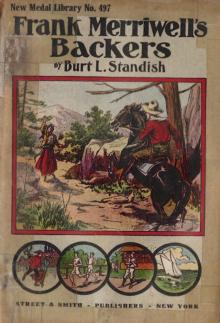 Frank Merriwell's Backers; Or, The Pride of His Friends
Frank Merriwell's Backers; Or, The Pride of His Friends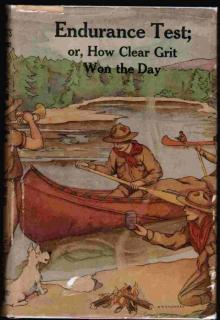 Endurance Test; or, How Clear Grit Won the Day
Endurance Test; or, How Clear Grit Won the Day Great Hike; or, The Pride of the Khaki Troop
Great Hike; or, The Pride of the Khaki Troop The Swan and Her Crew
The Swan and Her Crew A cup of sweets, that can never cloy: or, delightful tales for good children
A cup of sweets, that can never cloy: or, delightful tales for good children Frank Merriwell's Bravery
Frank Merriwell's Bravery Frank Merriwell Down South
Frank Merriwell Down South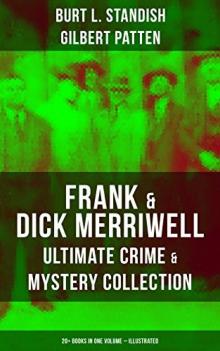 Dick Merriwell's Trap; Or, The Chap Who Bungled
Dick Merriwell's Trap; Or, The Chap Who Bungled The Trail of the Seneca
The Trail of the Seneca Wild Life in the Land of the Giants: A Tale of Two Brothers
Wild Life in the Land of the Giants: A Tale of Two Brothers From Squire to Squatter: A Tale of the Old Land and the New
From Squire to Squatter: A Tale of the Old Land and the New The Cruise of the Snowbird: A Story of Arctic Adventure
The Cruise of the Snowbird: A Story of Arctic Adventure Owen Clancy's Happy Trail; Or, The Motor Wizard in California
Owen Clancy's Happy Trail; Or, The Motor Wizard in California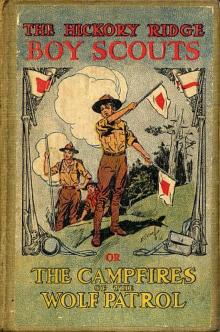 Boy Scouts: Tenderfoot Squad; or, Camping at Raccoon Lodge
Boy Scouts: Tenderfoot Squad; or, Camping at Raccoon Lodge Sing a Song of Sixpence
Sing a Song of Sixpence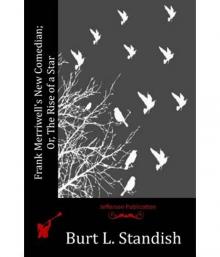 Frank Merriwell's New Comedian; Or, The Rise of a Star
Frank Merriwell's New Comedian; Or, The Rise of a Star The Sa'-Zada Tales
The Sa'-Zada Tales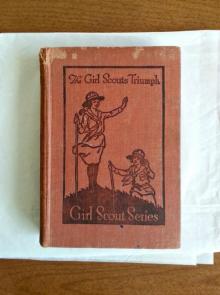 The Girl Scout's Triumph; or, Rosanna's Sacrifice
The Girl Scout's Triumph; or, Rosanna's Sacrifice Wild Adventures in Wild Places
Wild Adventures in Wild Places Fairies I Have Met
Fairies I Have Met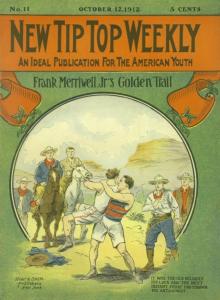 Frank Merriwell's Son; Or, A Chip Off the Old Block
Frank Merriwell's Son; Or, A Chip Off the Old Block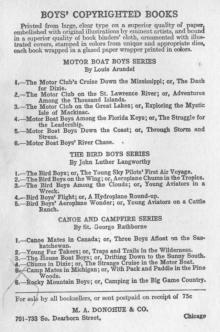 Motor Boat Boys' River Chase; or, Six Chums Afloat and Ashore
Motor Boat Boys' River Chase; or, Six Chums Afloat and Ashore Frank Merriwell's Athletes; Or, The Boys Who Won
Frank Merriwell's Athletes; Or, The Boys Who Won Bart Keene's Hunting Days; or, The Darewell Chums in a Winter Camp
Bart Keene's Hunting Days; or, The Darewell Chums in a Winter Camp Captain June
Captain June